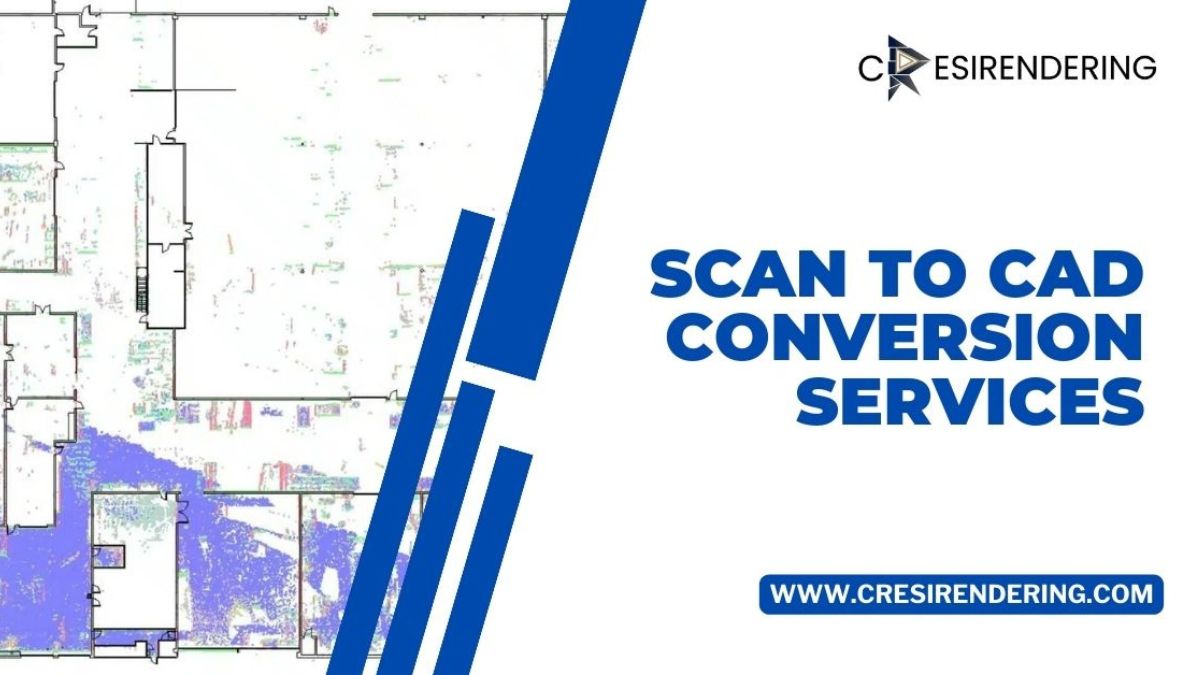
In the modern world of design and manufacturing, precision is paramount. As industries evolve, so do the tools and technologies that drive them. One such transformative technology is Scan to CAD conversion services.
This process has revolutionized the way engineers, architects, and designers work, allowing them to convert physical objects into detailed digital models. But what exactly is Scan to CAD, and why is it so crucial? Let’s dive into the details.
What is Scan to CAD Conversion Services?
Scan to CAD (Computer-Aided Design) conversion involves using 3D scanning technology to capture the exact dimensions and features of a physical object. The data obtained from the scan is then converted into a digital 3D model using CAD software.
This digital model can be used for various purposes, including design, analysis, and manufacturing.
The Process of Scan to CAD Conversion
- 3D Scanning: The first step involves using 3D scanners to capture the geometry of the physical object. These scanners can be laser-based, structured light, or photogrammetry devices. The result is a point cloud – a collection of data points in space that represent the object’s surface.
- Data Processing: The point cloud data is then processed to remove noise or irrelevant information. This step ensures that the data is clean and ready for conversion.
- CAD Modeling: The processed data is imported into CAD software, where it is converted into a 3D model. This model can be a surface model or a solid model, depending on the requirements.
- Refinement and Optimization: The initial CAD model might require further refinement to ensure accuracy. This step includes smoothing surfaces, adding details, and making adjustments as necessary.
Applications of Scan to CAD Conversion
Scan to CAD conversion has a wide range of applications across various industries:
- Automotive Industry: Used for reverse engineering car parts, creating digital prototypes, and quality control.
- Architecture and Construction: Enables the creation of accurate as-built drawings, restoration of historic buildings, and renovation planning.
- Healthcare: Helps in designing custom prosthetics, dental implants, and surgical planning.
- Manufacturing: Essential for quality inspection, tool and die making and rapid prototyping.
Benefits of Scan to CAD Conversion Services
1. Accuracy and Precision
One of the most significant advantages of Scan to CAD conversion services is the high level of accuracy it offers. Traditional measuring methods can’t match the precision of 3D scanning, which captures even the smallest details of an object.
2. Time Efficiency
Scan to CAD services drastically reduce the time required for creating CAD models from physical objects. This efficiency is particularly beneficial in industries where time-to-market is crucial.
3. Cost-Effective
While the initial investment in 3D scanning technology might be high, the long-term savings are substantial. Reduced labor costs, fewer material wastes, and faster project turnaround times contribute to overall cost-effectiveness.
4. Versatility
The versatility of Scan to CAD services makes them suitable for a wide range of applications. Whether you’re working on a small component or a large structure, the technology adapts to various scales and complexities.
5. Improved Quality Control
In manufacturing, quality control is critical. Scan to CAD conversion services ensure that every part produced matches the design specifications, reducing the risk of errors and improving overall product quality.
Choosing the Right Scan to CAD Service Provider
When selecting a Scan to CAD service provider, consider the following factors:
1. Experience and Expertise
Look for providers with a proven track record and extensive experience in your industry. Expertise in handling similar projects ensures better results.
2. Technology and Tools
Ensure the provider uses the latest 3D scanning and CAD software. Cutting-edge technology guarantees higher accuracy and better quality models.
3. Customization and Flexibility
Choose a provider that offers customized solutions tailored to your specific needs. Flexibility in services ensures that your unique requirements are met.
4. Customer Support
Good customer support is essential for addressing any issues or concerns promptly. Reliable support helps in smooth project execution.
5. Cost and Value
While cost is a significant factor, don’t compromise on quality for the sake of savings. Evaluate the value provided by the service and ensure it justifies the investment.
Future of Scan to CAD Conversion Services
The future of Scan to CAD conversion services looks promising with advancements in technology. Emerging trends like artificial intelligence, machine learning, and cloud computing are set to enhance the capabilities and efficiency of Scan to CAD services.
These advancements will further streamline the process, making it more accessible and cost-effective for various industries.
Conclusion
Scan to CAD conversion services are an indispensable tool in today’s design and manufacturing landscape. Their ability to provide precise, efficient, and cost-effective solutions makes them invaluable across multiple industries.
By choosing the right service provider and leveraging the latest technology, businesses can significantly enhance their productivity and quality control, paving the way for innovation and growth. Embrace the future with Scan to CAD conversion services and transform your physical designs into digital masterpieces.
Also read: Electrical AutoCAD Drawing Services